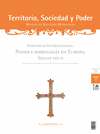Resumen
Resumen: A lo largo del curso de los siglos VIII-X cambió profundamente el cuadro de los eslavos que habitaban en Europa central, al otro lado de la frontera oriental del Estado carolingio. El conjunto de tribus, unidas por la comunidad de tradiciones y de cultura, se fue transformando en una sociedad dividida en clases y con una estructura cultural completamente nueva. Los antiguos sistemas tribales, relativamente homogéneos, se hicieron sistemas diferenciados internamente, enriquecidos por nuevos modelos. Tras el progreso económico, con el surgimiento de las primeras ciudades al formarse los estados, mutaron las condiciones de la vida cotidiana. Se afianzó una nueva visión del mundo, la religión cristiana con todas sus consecuencias culturales. Se desarrollaron nuevos y destacados métodos de transmisión de la información, la escritura. Los eslavos de Europa central se habían insertado en la corriente universal del nacimiento de la civilización europea medieval.
Palabras clave: eslavos, Europa central, orígenes, civilización medieval.
Abstract: At the outset of the Middle Ages the Slavs occupied in the Central Europe lands at the foot of the Ore, Sudety and Carpathian Mountains as well as the adjacent area of the Central European Lowland. In the light of the archaeological record there emerged during the 7th and 8th cent. some distinct ethnographic regions, differentiated by their material culture and forms of settlements. The inhabitants were referred to in Carolingian sources from the 8th and 9th cent. as Obodrites, Veletians, Serbs, Czechs, Moravians. Later, further to the east historiographic accounts mentioned other tribal units. As the neighbours of the Carolingian Empire they continued represent in the 9th cent. the barbarian sphere with their traditional world-view and patterns of everyday life. However, around the middle of the 9th cent. on the Morava river, at the intersection of routes linking the Baltic with the Adriatic and along the Danube, the Carolingian State with the Black Sea, there arose a state which was the first to bring Slavs of that region into the world of Christian civilization in both its western, Latin and eastern, Byzantine, variant. This was the state of Great Moravia. It was soon succeeded by the state of Premyslids, formed in the Bohemian Basin and the state of Polanian Piasts to the north of the Sudety and Carpathian Mountains. Conversion to Christianity of Czech (883) and Polish (966) rulers brought the inhabitants of their lands into the mainstream of civilisation change proper for the Latin Europe. Longer resistance to the new religion and the western culture models was put up by Slavs on the Elbe and the Baltic coast. The social and political system of the Slav societies lingered for a long time a tribal legacy. The authority of the monarch based on the patrimonial principle, with support from his armed retinue, from which he recruited his officials. After the christianisation important support was also given by educated clergy. The mainstay of territorial authority in Slav states were strongholds built in sites important from the point of view of communication and strategy. There the population had to bring in their dues and render their sendces. The socio-political change was accompanied by economic progress. First of all the development of non-agrarian market and trading centres ie. of early towns was of fundamental importance. On the Baltic coast there emerged ports associated with trading places, evolving during the 9th and 10th cent. into closely built fortified centres. The care was taken there to retain continuity of the settlement plot as well as of the regular network of roads. In the inland the non-agrarian market and trading places developed around the fortified centres of the state power. The rise of this sort of settlement agglomerations was an important factor of the civilisation process. Assimilation of Christianity was a lengthy process. The new religion was accepted most rapidly in court circles and by inhabitants of protourban settlements. In rural areas only later the new faith established more firmly. The writing became a medium of social communication, new patterns of morals and aesthetics were diffused too. In that way the Slav inhabitants of Central Europe associated themselves with the medieval European civilisation.
Keywords: Slavs, Central Europe, origins, medieval civilisation.

